Showing 1131–1140 of 1176 results
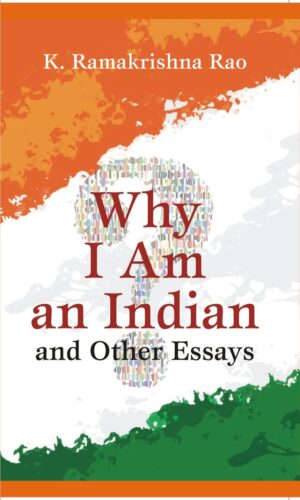
This volume reflects the evolution and growth of Prof. K. Ramakrishna Raos thought and the different dimensions and shades of his academic pursuits, ranging from Gandhis thought to consciousness studies, educational issues, identity problems, parapsychology, and Indian psychology in general and yoga in particular.
This volume reflects the evolution and growth of Prof. K. Ramakrishna Raos thought and the different dimensions and shades of his academic pursuits, ranging from Gandhis thought to consciousness studies, educational issues, identity problems, parapsychology, and Indian psychology in general and yoga in particular.
While the topics covered appear to be very diverse and quite divergent, there is a common thread knitting them together; the thread is that the material covered is concerned with human nature. The crucial aspect of each of us is identity, which bestows on us individuality and separateness. It has its advantages and entails some problems as well. This book reflects on them from different perspectives, focusing mainly on the philosophical and psychological aspects in human functioning, and ones identity and unity with others.
Man is conceived as a composite of body, mind and consciousness. The discussion of these concepts hopefully sheds light directly or indirectly on the multiple problems concerning human nature and the associated difficulties in chasing them in real life and especially in ones academic pursuits.
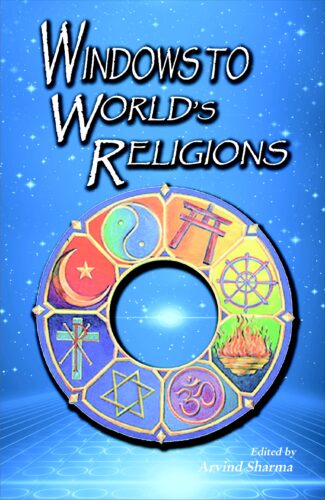
A selection of papers presented at a global congress on World’s Religions after September 11, stressing the need for various religions to develop a better understanding of each other. The papers deal with Islamic, Christian, Bahai, Sikh, Primal and Hindu religious traditions and beliefs.
The volume is concerned with the role of religion in the present day. Presenting proceedings of a global Congress on Worlds Religions after September 11 held in September 2006 at Montreal, Canada, it stresses the need for interfaith friendships to develop understanding between faiths and remove stereotypes that have emerged concerning religious beliefs and their followers. Examining the thoughts of Western theologians and others on the role of religion, it discusses spirituality as being at the root of tolerance. The papers refer to Islamic, Christian Mennonite, Bahzi, Sikh and Hindu religious traditions and beliefs but bear specific reference to the North American Roman Catholic Retreat Centre at Pembroke, Ontario, Canada. They engage in examining specific topics pertaining to the different religious faiths and traditions. They examine the life of Guru Arjan Dev and his message and its significance today, the work of Mira Behn towards conserving the environment of the Himalayas, and the indigenous Australian Christian womens perception. The book provides a glimpse into the life, work and experiences of the spiritual women of Ramanashrama at Tiruvannamalai in Tamil Nadu and Ramanas views on womans right to spirituality, asceticism and salvation. It showcases the contribution of the Inter-religious Council of Central New York towards bringing people of different faiths and cultures into situations of mutual respect and trust. The volume includes the text of the Universal Declaration of Human Rights.
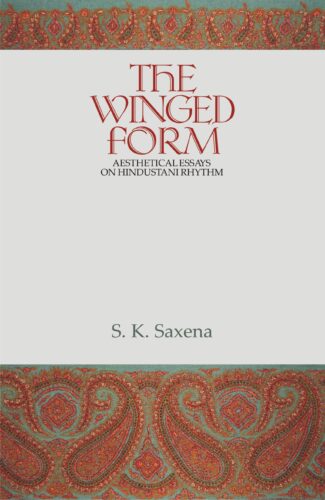
This collection of essays is a pioneering attempt to look at Hindustani rhythm from the viewpoint of the contemporary Western aesthetics, as also to weigh this aesthetics against the theory and practice of rhythm as it permeates and determines the music and Kathak dance of north India. (46 words)
This collection of essays, a thoroughly revised and enlarged version of its first earlier edition (1979), is a pioneering treatment of the Hindustani rhythm in the way of contemporary (Western) aesthetics. It seeks, on the one hand, to determine and distinguish the meaning of such key words as laya, matra, bol, theka, sama, and layakari, and, on the other hand, to seize the details and aesthetic semblances of live rhythm as they appear to contemplation.
Some wider aesthetical questions have also been addressed in this book. How, if at all, can rhythm be regarded as an autonomous art? What are the elements of its winged form, and how can it yet appear steadfast and virtually motionless? Is it proper to speak of the art of rhythm as symbolic in its significance or as expressive in some distinctive way? Or, can it be said to embody what it signifies?
Insofar as rhythm is fast becoming a vital subject of aesthetic reflection in the West today, the book also seeks to weigh the conflicting views of two modern aestheticians, Susanne K. Langer and Philip Alperson, against the theory and practice of Hindustani rhythm.
Every lover of this specific genre of rhythm stands to benefit from a reading of this book. It would prove to be of value also to those who are interested in Kathak dance, for no other classical dance of India depends so manifestly on rhythm.

This innovative elucidation charts out the structural map of wisdom the finalised knowledge concerning life in its generic and specific aspects. It encompasses the entire range of human wisdom including epistemology, axiology, politics and mysticism.
This strikingly innovative elucidation charts out the structural map of wisdom the finalised knowledge concerning life, both in its generic and specific aspects. Nataraja Guru, the eminent contemporary thinker, handles the theme as well as the methodology in a very original way. Thematically it encom-passes the entire range of human wisdom, including epistemology, axiology, mathematics, sociology, politics and mysticism. The author presents a scheme of coherent pattern in which all distinctions between contemplative and active, functional and theoretical, contingent and necessary, Eastern and Western dissolve into the unity of the Absolute Truth. The subject-matter and object-matter of wisdom when put in proper perspective around the normative notion of the Absolute, culminate in the idea of common human happiness. In the age of excessive specialization and compart-mentalization, Nataraja Gurus handling of the subject matter is a unique response to the legitimate cry for unification and integration. The methodology adopted throughout this interpretation is unitively taking care of the vertical progress of human wisdom along with the horizontal process of adjustment with the incidental necessities that are demanded by the process. Nataraja Gurus insightful combination of the spiritual with the modem science stands out as a tall land-mark in the field of contemporary wisdom and scholar-ship. It is a powerful beacon to the solace-seeking mankind that is being tortured by the outrageously materialistic society.
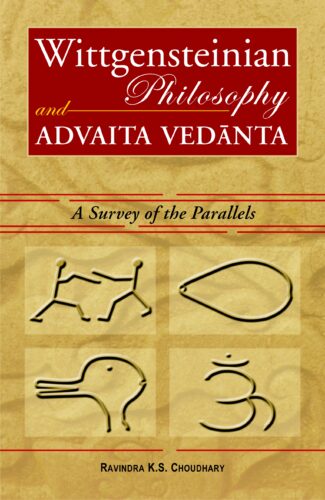
The philosophy of Wittgenstein and the Advaita Vedanta philosophy are two philosophical traditions far apart in time and cultural space yet they possess striking similarities. This volume painstakingly researches Wittgenstein’s works and the basic texts of Vedanta, the Upanishads, the Brahmasutra and the Bhagavad-Gita, delving deep into their similarities.
The philosophy of Wittgenstein and the Advaita Vedanta philosophy are two philosophical traditions far apart in time and cultural space yet they possess striking similarities. This painstaking research carried out with a rare thoroughness by an erudite scholar, Ravindra K. S. Choudhary, shows that there are illumi-nating parallels between them even while recognizing their legitimate differences. The work argues that though Advaita Vedanta did not exert a direct influence over Wittgenstein, the philosopher owes much to Schopenhauer who was a great admirer of the Upanishads. Examining a variety of Wittgenstein’s works earlier as well as later and the basic texts of Vedanta, the Upanishads, the Brahmasutra and the Bhagavad-Gita, along with Shankara’s interpretations of them, it delves into their similarities vis a vis the question of reality, the realm of value and some central issues of ethics and religion. It observes that, for instance, Wittgenstein’s notion of the mystical (das Mystische) is similar to the Advaitic view of Brahman. For both, the matters of value have a higher or transcendental level as distinct from the world of facts. Wittgenstein’s idea of a good or happy life is very close to the Vedantic ideals of jivanmukti as well. The work goes on to show that the Vedantic parallels of Wittgenstein’s philosophy persists in distinctive ways from the Tractatus to his last writings. The volume reveals a fresh approach in the field of comparative philosophy. The volume will benefit all those concerned with the discipline of philosophy, Indian or Western.
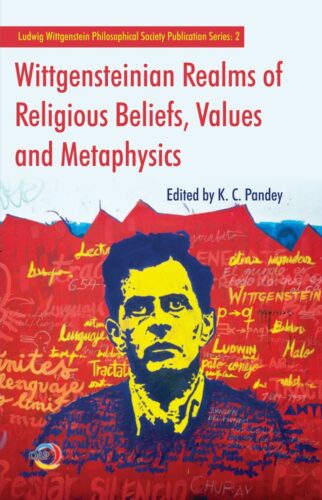
All that cannot be expressed in language, for early Wittgenstein, belong to the realm of Unsayable or Showable. Such a realm consists of religious beliefs, ethical values, aesthetics, metaphysics, solipsism, love, death among other aspects of life which language is incapable of depicting successfully. Later Wittgenstein did not insist on the inexpressibility of these realms as each of them has their own distinct form of life. In this background this anthology is an attempt to explore various facets of these aspects of Wittgensteinian philosophy through various elucidations and interpretations. It is classified into three sections, viz. “Religious Beliefs, Wittgensteinian Fideism, Religious Pluralism, and Cultural Debates”, “Absolute Value, Ethics, Aesthetics, Architecture” and “Subjectivism, Solipsism, Metaphysics, and Hermeneutics”. It aims at bringing out the current development in the field as found in the debates and discussions on Wittgensteinian philosophy in the contemporary philosophical world.
All that cannot be expressed in language, for early Wittgenstein, belong to the realm of Unsayable or Showable. Such a realm consists of religious beliefs, ethical values, aesthetics, metaphysics, solipsism, love, death among other aspects of life which language is incapable of depicting successfully. Later Wittgenstein did not insist on the inexpressibility of these realms as each of them has their own distinct form of life. In this background this anthology is an attempt to explore various facets of these aspects of Wittgensteinian philosophy through various elucidations and interpretations. It is classified into three sections, viz. “Religious Beliefs, Wittgensteinian Fideism, Religious Pluralism, and Cultural Debates”, “Absolute Value, Ethics, Aesthetics, Architecture” and “Subjectivism, Solipsism, Metaphysics, and Hermeneutics”. It aims at bringing out the current development in the field as found in the debates and discussions on Wittgensteinian philosophy in the contemporary philosophical world.
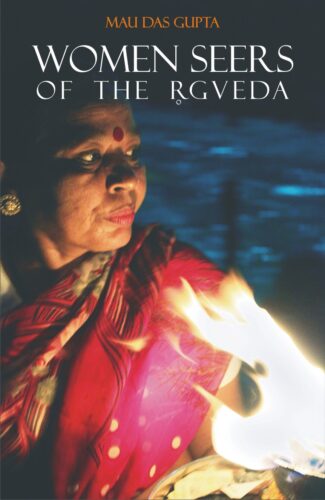
Providing detailed accounts of the women seers of Rigveda, this volume discusses the traditional expositions vis-à-vis the modern interpretations of those accounts. It minutely explains the sociocultural aspects of the select texts, thus exposing the world-view of those women seers.
This volume brings forth an in-depth study of Rigveda from the sociocultural perspective, analysing the various aspects of hymns ascribed to the women seers of the root Veda. Though modern scholars from the East and the West have made many an attempt in interpreting the hymns of the Rigvedic poetesses, those lacked a thorough study from the sociocultural perspective.
While providing detailed accounts of the women seers of Rigveda, this volume discusses the traditional expositions vis-à-vis the modern interpretations of those accounts. It minutely explains the sociocultural aspects of the select texts, thus exposing the world-view of those women seers. Their personal traits and compositions on the basis of the mythological data available in the Vedic and subsequent literatures enrich the volume further.
Apart from the liturgical peculiarities and literary analysis of the hymns of the women seers, and the language and stylistics of the texts from a linguistic point of view, the book deals with a study of the sentence patterns which, normally lacks in Sanskrit research works.
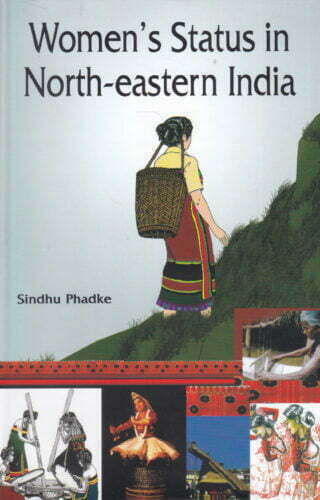
Inspired by her extensive travels as UNICEF’s Representative, the author has provided valuable information Þ some hitherto unknown to us Þ supported by statistics, maps and charts on the various aspects of life in the seven North-Eastern States of India in general and the plight of women in particular.
The vast socio-economic and cultural diversity of the north-east region of India remains a largely unexplored area of academic research. Within it, the status of women continues to be a neglected aspect. This book contributes to the slowly expanding body of literature on the subject of the status of women in the seven North-Eastern States of India, viz. Assam, Arunachal Pradesh, Manipur, Meghalaya, Mizoram, Nagaland and Tripura. The author makes a painstaking effort to put together the economic, social, educational and cultural dimensions of the plight of women in these States, in the uniquely individual ecological, historical, social and political backdrop of the region. In the process she uncovers many aspects hitherto unknown to us, and also demolishes certain standard and pre-conceived notions about North-Eastern women. We learn about the distinctive features of each State, individually, in relation to each other, and the country as a whole. Using primary and secondary sources, the author builds up a useful wealth of statistical information about the subject; the book also contains explanatory maps and charts. In all, it is a useful text not just for scholars of the North-East and Gender Studies, but also for the general readers as well.

The book is a biography of the eminent saint-philosopher of modern India, Guru Narayana. It deals with the meaning and essence of guruhood and gives rational explanations for many baffling aspects of life. It reveals the significance of his Advaita Vedanta method for introducing a new science of wisdom dialectics. It also describes the physical and psychological conditions of South India and explores the spirituality of India.
Millions of people have been deeply affected by the life and teachings of the Guru Narayana, who is the central figure of this book. This is a biography, not only of the Guru Narayana, but of Guruhood itself. Religions and philosophies have their sources in such men, and the aim here is to clarify this fact, without being sentimental or sensational. In doing so, many hitherto baffling enigmas of Indian life are given a rational explanation for the first time. Nataraja Guru, the disciple-successor of the Narayana Guru, uses the contemplative discipline which was characteristic of the Guru Narayana, and brings the Advaita Vedanta method into the forefront of global thought as understood today, introducing a new science of Wisdom-Dialectics. Nataraja Gurus scheme of correlation between science and mysticism amounts to an epochal advance in philosophy. This book represents the voice of the Guru. The Word of the Guru provides a quantity of original material for study, including fully annotated and carefully translated writings of Guru Narayana. It describes the physical and psychological conditions of South India with great brilliance. The spirituality of India is set forth here in its clearest terms, unambiguous and shorn of all limiting frontiers, suitable for readers in all parts of the world.

The book is a biography of the eminent saint-philosopher of modern India, Guru Narayana. It deals with the meaning and essence of guruhood and gives rational explanations for many baffling aspects of life. It reveals the significance of his Advaita Vedanta method for introducing a new science of wisdom dialectics. It also describes the physical and psychological conditions of South India and explores the spirituality of India.
Millions of people have been deeply affected by the life and teachings of the Guru Narayana, who is the central figure of this book. This is a biography, not only of the Guru Narayana, but of Guruhood itself. Religions and philosophies have their sources in such men, and the aim here is to clarify this fact, without being sentimental or sensational. In doing so, many hitherto baffling enigmas of Indian life are given a rational explanation for the first time. Nataraja Guru, the disciple-successor of the Narayana Guru, uses the contemplative discipline which was characteristic of the Guru Narayana, and brings the Advaita Vedanta method into the forefront of global thought as understood today, introducing a new science of Wisdom-Dialectics. Nataraja Gurus scheme of correlation between science and mysticism amounts to an epochal advance in philosophy. This book represents the voice of the Guru. The Word of the Guru provides a quantity of original material for study, including fully annotated and carefully translated writings of Guru Narayana. It describes the physical and psychological conditions of South India with great brilliance. The spirituality of India is set forth here in its clearest terms, unambiguous and shorn of all limiting frontiers, suitable for readers in all parts of the world.
| There are no products |